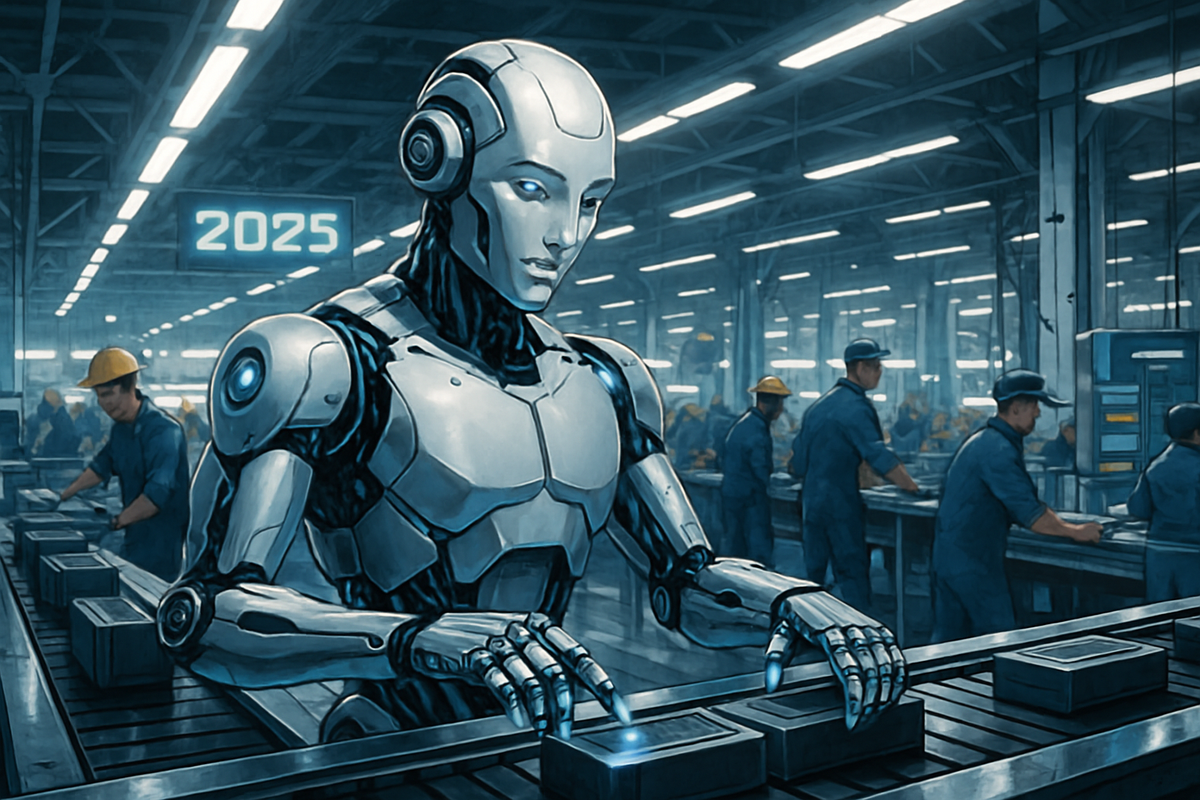Humanoid Robots 2025: The Coming Workforce Revolution
2025 brings humanoid robots from sci-fi to reality, revolutionizing industries from manufacturing to healthcare. Are you ready to work alongside them? Discover how this technology will reshape our future and what it means for your career development.

Welcome to the Age of Humanoid Robots
If you woke up this morning wondering whether the robot revolution is finally here, congratulations: 2025 is the year humanoid robots officially clock in. From manufacturing lines in Detroit to hospital wards in Seoul, these mechanical colleagues are no longer a sci-fi fantasy—they’re on the payroll, and their numbers are set to explode.
“By the end of 2025, the global humanoid robot market is expected to exceed $2 billion, growing at a mind-bending 150%+ CAGR. Ready or not, the future of work is getting an upgrade.”
Why Now? The Mass Production Tipping Point
What’s so special about 2025? After years of prototypes and viral dance videos, companies like Tesla, NVIDIA, and Figure are putting their money (and bots) where their mouth is. Thanks to breakthroughs in AI, machine learning, and mechanical design, we’re seeing:
- Mass manufacturing of humanoid robots—yes, real factories churning out real robots, not just lab demos.
- Lower costs: Economies of scale and modular parts mean robots are now a business reality, not a billionaire’s toy.
- AI-powered agility: Today’s bots are smarter, safer, and able to handle unpredictable, human-shaped tasks.
Where Robots Are Already Clocking In
1. Manufacturing & Logistics: The Assembly Line Goes Bipedal
Remember the days when robots were just stationary arms bolted to the floor? In 2025, factories are hiring humanoid robots that can:
- Carry heavy loads, operate tools, and move between workstations—just like humans (but with fewer coffee breaks).
- Collaborate side-by-side with people, adapting to new tasks on the fly.
- Work in hazardous or repetitive environments, reducing injuries and boosting efficiency.
2. Healthcare & Elder Care: Compassion Meets Circuitry
The aging global population is a challenge, but robots are stepping in as:
- Patient transporters and medication assistants, freeing up nurses for higher-level care.
- Companions for the elderly—yes, some robots can chat, play chess, and even dance (badly).
- Sanitization and delivery bots, ensuring hygiene and efficiency in hospitals.
3. Hospitality & Retail: Service With a Silicon Smile
In hotels and stores, humanoid robots are:
- Greeting guests, carrying luggage, and giving directions (in multiple languages—take that, high school French!).
- Restocking shelves and managing inventory in real-time.
- Handling check-ins and even making coffee (jury’s out on the latte art).
The Big Players & Their Breakthroughs
Tesla Optimus is leading the charge in affordable, general-purpose robotics, aiming for large-scale deployment in factories and beyond. Figure and NVIDIA are pushing the boundaries with robots that learn from experience, adapt to new environments, and even use generative AI for problem-solving—think of them as tireless interns that never ask for a raise.
According to TrendForce, the first wave of mass-produced humanoid robots is rolling out in 2025, with U.S. and Chinese giants investing billions to win the race. The goal? Seamless human-robot interaction in factories, warehouses, and—soon—public spaces.
The Economics: Robots on the Balance Sheet
Now for the million-dollar question: Do robots pay off?
- Initial investment is high, but robots work 24/7, don’t call in sick, and can be reprogrammed for new roles.
- Return on investment is accelerating as hardware costs drop and AI software matures.
- Job impact: While some repetitive roles will disappear, new careers in robot maintenance, programming, and human-robot collaboration are emerging.
“Robots aren’t coming for all our jobs—they’re coming for the tasks we never wanted. The future belongs to those who can work with machines, not against them.”
Society & Daily Life: Living With Our New Colleagues
Get ready for a world where seeing a robot walking down the street isn’t news—it’s Tuesday. From public safety patrols to classroom teaching assistants, expect humanoid robots to become part of our everyday landscape. But this shift raises important questions:
- Ethics & trust: How do we ensure robots act safely and respectfully?
- Upskilling: What should workers and students learn to thrive alongside robots?
- Community impact: Will robots help close labor gaps—or widen divides?
Spoiler: The answer depends on how we choose to design, deploy, and regulate these technologies. That means the conversation (and the power) is still in our hands.
How to Prepare: Action Steps for Humans
- Learn the basics of AI & robotics—no, you don’t need a PhD. Start with free online courses or local workshops.
- Embrace upskilling: Whether you’re a manager or machinist, understanding how to work with robots is the new literacy.
- Get involved in the conversation: Join community forums, business roundtables, or subscribe to smart news (like Funaix!) to stay ahead of the curve.
“The best way to predict the future is to subscribe to it. Become a Funaix Insider—it’s free (for now), and only subscribers can join the conversation in the comments.”
Final Thoughts: Humanity’s Next Great Collaboration
Humanoid robots aren’t just another gadget—they’re a new chapter in the story of work, society, and human ingenuity. The revolution will be collaborative, not competitive. So whether you’re dreaming of robot coworkers or dreading the robot apocalypse, remember: The future is being built by people who ask questions, stay curious, and subscribe to the best ideas.
Ready to shape the future? Subscribe to Funaix for free and join the smartest community in the robot era. Only subscribers can comment—don’t miss your chance to have your say!
Published on August 16, 2025. All insights are based on the latest industry research and expert commentary. For deeper dives and news alerts, stay connected with Funaix.




